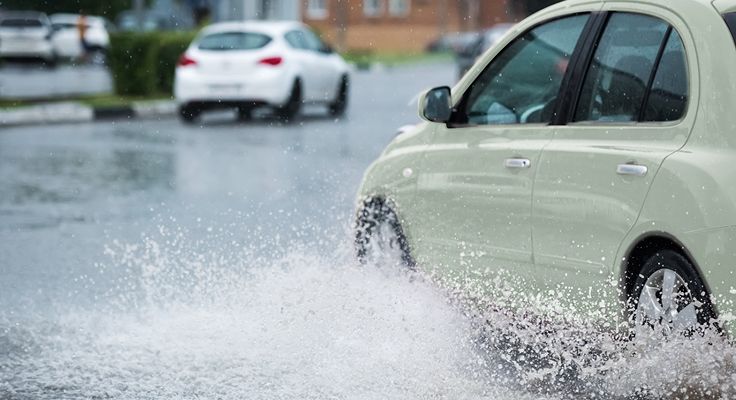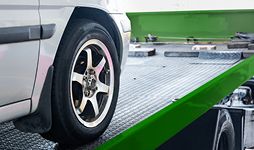Driving in flood water can be very dangerous. However, it can also be a necessary course of action due to burst water mains, overflowing rivers or adverse weather such as storms and heavy rain.

How to drive in floods or standing water
- Drive slowly - you’re at less risk of an accident as you’ll have more time to react. Slower driving also means less chance of the water creating a “bow wave” which could potentially flow backwards into the engine resulting in damage to the car
- Check water depth – don’t drive in water higher than 10cm whether it's moving or still
- Use an alternative route – before you start your journey, check the route you wish to take to see if there are any reported holdups. For example, fallen trees or accidents reported. It’s also a good idea to make sure your mobile is fully charged before you leave home
- Don’t make a splash - travelling at speed can be a danger to others such as cyclists or pedestrians. You can get fined for causing water to splash
- Test your brakes – once you exit the water, test your brakes when it is safe to do so. Faulty brakes can be a danger to you, other motorists and pedestrians
- Use your headlights - it’s a legal requirement to have your headlights turned on when visibility is reduced to less than 100 metres. They alert other drivers to your presence, especially in fog and low-light conditions
- Stay in your car – don’t be tempted to leave your vehicle if you get stuck. Call for help and wait in the car
- Don't stop moving – keep your car in a low gear and continue the momentum at a steady pace until you are clear of the water
- Drive in the middle of the road if it safe to do so – this is where the flood water will be at its most shallow. Be aware of any oncoming traffic.
- Let approaching cars go first – depending on who has right of way, it’s best to allow cars to pass you first, safely
How to drive in heavy rain
Slow down
Driving in floods can increase the distance you need to stop when braking. The Highway Code recommends you double the amount of normal stopping distance between you and the car in front. This will allow you to slow down safely and reduce the risk of an accident.
If your steering becomes less responsive, reduce your speed and slow down gradually, watching out for other motorists and pedestrians.
Turn on your headlights
Like in floods or standing water, it’s a legal requirement to have your headlights turned on when visibility is reduced to less than 100 metres. Keep them dipped, others on the road will be able to see you better.
Keep spray to a minimum
Travelling at speed can be a danger to others such as cyclists or pedestrians. You can get fined for causing water to splash.
Why should I slow down?
As with driving in flood weather, it’s good to slow down in heavy rain conditions. You’re at less risk of an accident as you’ll have more time to react to the situation.
Driving through fast-moving water
Don't try driving through fast-moving water. You should never underestimate the speed of the water as there is a serious chance your vehicle could be swept away.
How to drive with poor visibility
The Highway Code states you must use your headlights when driving if visibility is seriously reduced. This is generally when you cannot see for more than 100 metres.
Dipped headlights can be used to help visibility during adverse weather conditions, which often accompany flooding. Use your hazard lights to increase your visibility to other road users, for example; if you have to come to a stop before an area of flood water.
Windscreen wipers should be replaced as soon as they stop clearing your front and back windscreen effectively, you don't want to be caught out struggling to see in the middle of a storm. Take a look at our separate guide and checklist for driving in winter weather including storms.
What should I do if I break down or get stranded in a flood?
If you break down in heavy rain don't prop the bonnet open while you wait for help. The engine will be more difficult to start again if the electrics are wet.
If you are trapped in flood water, it's usually advisable to stay inside the vehicle; it will most likely be cold water and even able swimmers can struggle in these conditions.
How can I get help or make a claim?
If you have been affected by floods and need advice on making a claim, we are here to help. MORE THAN Claims Helplines are available 24 hours for customers.
Before you make a claim, please have your policy schedule and as many details of the damage as possible to hand.
You can call us free on 0800 300 252 or go to our make a car claim page.

